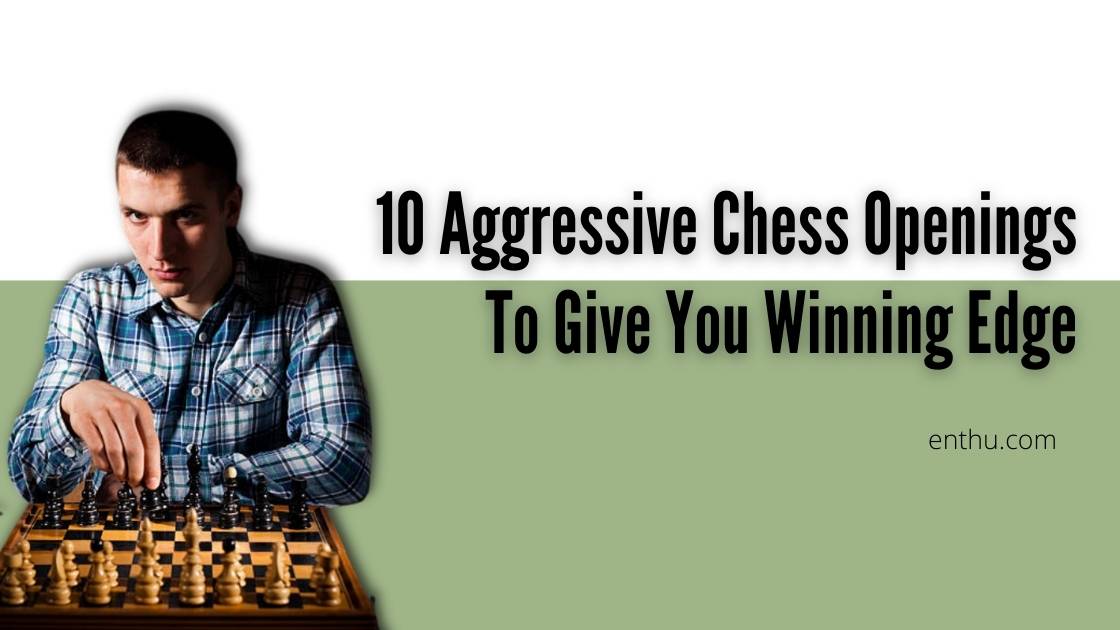In chess, I think you are either a Magnus Carlsen or a Bobby Fischer. I simply don’t have faith in someone who claims to be good at playing both aggressively and calmly. Every player has their forte or trying to figure out one.
This is for you, the aspiring Fischers out there, who are learning chess and improving every day.
To find out the benefits of playing chess, click here. And keep reading to find out the most aggressive chess openings.
Most Aggressive Chess Openings for White
1. The Smith-Morra Gambit: White
Although the Smith-Morra Gambit is more popular for club players, there are Grandmasters who play this chess opening from time to time.
In this Gambit, the player sacrifices a white pawn to build an attack against the black king. Consider it as the perfect move to make the black king nervous and finish the matches in fewer moves than you expected.
This approach has proven to be a full-proof plan against black’s Sicilian strategies.
| The Smith-Morra Gambit is the perfect antidote to the Sicilian defense. |
History
The American International Master Marc Esserman is famous for playing the Morra Gambit.
How to Play
The series of moves is 1. e4 c5 2. d4 cxd4 3. c3
First, begin by moving the white king’s pawn to e4(considering you’re playing White). Next, the black c-pawn will move to c5. Now, it’s your turn to work at the center. Move the queen’s pawn to d4.
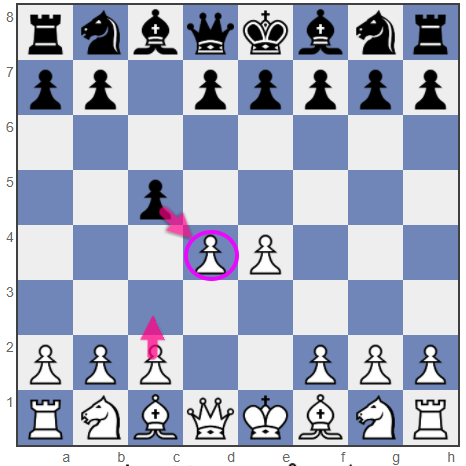
Black has no better option than to take the pawn at d4. Then, it’s your turn to put out the white c-pawn and establish a strong grip over the match.
| Tip: Play this opening only when you’re ready to play aggressively and take risks because there’s no coming back from there. |
2. Evan’s Gambit: White
Undoubtedly, it’s one of the most dangerous chess opening strategies for White.
Masters like Garry Kasparov, Bobby Fischer, Vladimir Kramnik, and Nigel Short have opened matches playing Evan’s Gambit.
Just remember, once you use this strategy, you can’t trade pieces. You have to play aggressively by using every move as an attack. Try to tie up the black king at the center as soon as possible.
History
The Welsh sea Captain William Davies Evans was the first player to play this chess opening at Evans–McDonnell, London 1827. Therefore, it’s known as Evan’s Gambit.
How to Play
The series of moves is 1.e4 e5 2.Nf3 Nc6 3.Bc4 Bc5 4.b4
Move the white king’s pawn at e4. At this point, most opponent players move the black king’s pawn to e5. Now, you attack the black pawn at e5 with your white knight (2Nf3).
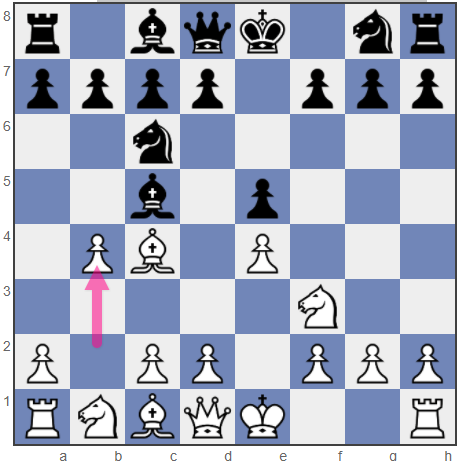
The opponent uses his knight (2…Nc6) to defend the pawn at e5 . Next, bring out the white bishop c4. The enemy player moves his black bishop at c5. Finally, it’s your turn to sacrifice a white pawn for better opportunities in the center.
There you have, the Evans Gambit.

Make your child the next Magnus Carlsen
3. The Grand Prix Attack: White
Like Smith-Morra Gambit, the Grand Prix attack is also a quite popular line amongst club players. If you think about aggressive defenses against Sicilian, the Grand Prix attack is definitely one of the more powerful ones.
In this line, the white develop their pieces in the center and attack on the kingside while preparing a future f4-f5.
If you’re a beginner and looking for an easily memorable defense against Sicilian, then this is the weapon you’re looking for. It will destroy your enemy in fewer moves.
History
The legendary FM David Rumens won the UK-based Cutty Sark Grand Prix tournaments in the 1970s and ’80s. He won by opening with this, then unpopular, line against Sicilian.
Following his record-breaking success, this line was named the Grand Prix attack.
How to Play
Although chess players use a varied series of moves to reach the Grand Prix attack, the most common one is–1. e4 c5 2. Nc3 Nc6 3. F4 g6 4. Nf3 Bg7 5. Bb5
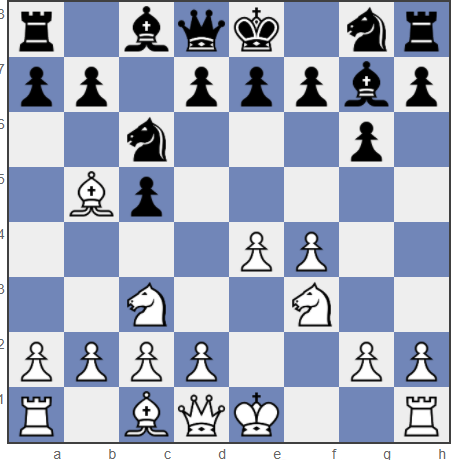
Begin with your first move–play the white king’s pawn at e4. Your opponent will most likely reply with a pawn at c5. Then, you will play your knight at c3. At this point, your enemy player will come up with their knight at c6.
Next, it’s your turn to move up your pawn two squares at F4. Now, your opponent will play the most popular black continuation: g6. After that, you will play the white knight at f3, followed by your enemy’s Bg7 move.
Now, you, aka the White, have incredible set-ups at your disposal. Just play with Bb5.
Queen Nefertiti played a chess-like board game.
Read the History of Chess to find out what it was.
4. The Vienna Game: White
If you’re somebody who doesn’t like to play spontaneously but likes to strategize beforehand, this is the chess opening for you.
I recommend this opening strategy for players who love playing the Halloween Gambit, the Three Knights Game, and the King’s Gambit.
It’s easy to learn and opens up various pathways for the white.
History
Earlier, it was named the Hamppe Opening, after the Swiss player Carl Hamppe. Later in the 1840s, a government serviceman popularized it in Vienna. White’s idea
It was commonly played by Jacques Mieses (1865- 1954), Wilhelm Steinitz (1836-1900), and Rudolf Spielmann (1883-1942).
How to Play
The most common series of moves to play this line is 1.e4 e5 2.Nc3.
Begin by playing the white king’s pawn at e4. To this, the opponent will reply with a pawn at e5.

Now, you develop the white queenside bishop to c3.
The series of moves is 1.e4 e5 2.Nc3 Nf6 3.Bc4 Nxe4 4.Qh5 Nd6 5.Bb3 Nc6

Next, your queen can take a diagonal path to either f3 or h5.
Remember, this is one of the variations of playing Vienna Game and it’s definitely powerful and effective.
There are 1756 chess grandmasters in the world.
Read How many Grandmasters are there to find how many are active.
5. The Danish Gambit: White
This opening is for the ferocious chess players who like to attack often.
Even though it’s less popular at the international level, in the past, legends like Blackburne, Marshall, Alekhine, and Mieses popularized it.
History
Danish player Martin Severin From popularly played the opening in the Paris 1867 tournament.
The opening was a hit and, therefore, changed into the Danish Gambit.
How to Play
Sometimes, it takes less than 20 moves to finish the game when using the Danish Gambit. The series of moves are 1.e4 e5 2. d4 exd4 3. c3
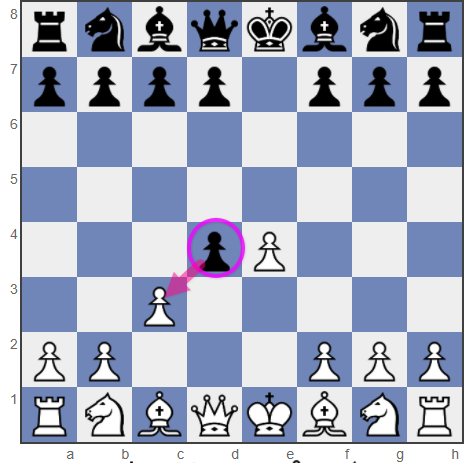
Begin with the “Center Game” (1.e4 e5) and continue by offering your queen’s pawn at d4 for sacrifice. Now, the opponent will capture the pawn, but you (white) will let go. Instead, you will work on the development!
Next, you will play c3, and black can decline the Gambit or accept the Gambit by playing 3…dxc3.
Ever heard of Dutch Defense?
Read Checkout “Dutch Defense: Chess Opening Strategy” to find out.
Most Aggressive Chess Openings for Black
Suppose you’re looking for a way to stop white from manipulating the center, open with this defense.
It helps the second player challenge white’s control by attacking the White’s King’s Pawn. In modern chess, it’s one of the oldest openings for black. It is also called Center Counter Game/Defense.
History
According to chess historians, it was first played by Francesc de Castellví and Narcís Vinyoles in Valencia in 1475.
Later on, legends like Nikola Karaklajic, David Bronstein, and Nona Gaprindashvili opened using this line.
How to Play
The first series of moves is: 1. e4 d5
Here, the White opens with the king’s pawn at e4, and you play the black queen’s pawn at d4. Now, as expected, the white pawn will counter your pawn (2. exd5).
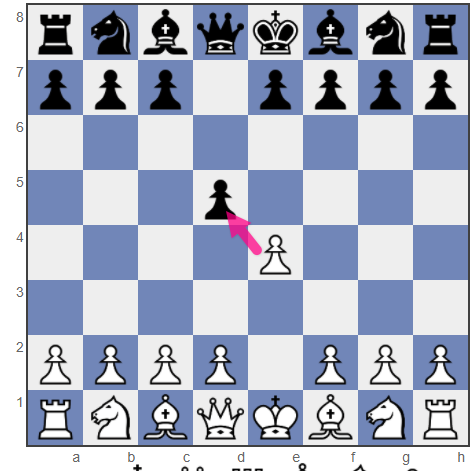
Now, first, you need to move your black queen to d5 and counter the white pawn. Then, move your queen to a5 in the next move.
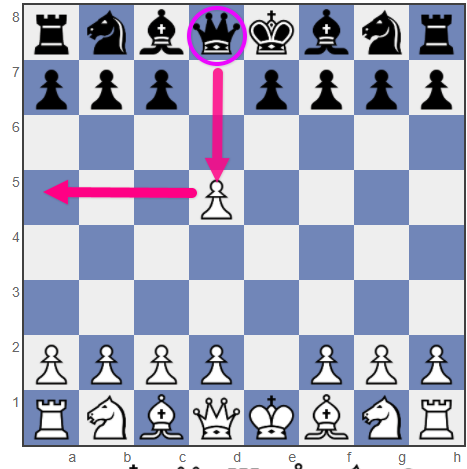
This will open up a lot of opportunities for the second player to build your pieces in the center.
Want to know more Response against 1.e4?
Read “Best Chess Openings for Black against 1.e4” to find out.
2. Alekhine’s Defense: Black
Although a less popular defense, it’s one of the best chess openings for black.
In this line, the black attacks white’s e-pawn instantly by developing the kingside knight.
As the Grandmaster, Nick de Firmian, observes in MCO-15 (2008), “The game immediately loses any sense of symmetry or balance, which makes the opening a good choice for aggressive fighting players.”
History
The great chess player Alexander Alekhine introduced this defense in the 1921 Budapest tournament. He used it while playing against Endre Steiner and Fritz Sämisch.
Since then, it was named after him–Alekhine’s Defense.
How to Play
The series of moves in the modern variation is: 1.e4 Nf6 2. e5 Nd5 3. d4 d6 4. Nf3 Bg4
It’s one of the four variations of this defense written in Encyclopaedia of Chess Openings.
When White begins with e4, your (black’s) immediate intention is to take center control. So, play Nf6. Next, the White’s most likely to play e5 here, to take over the space.
Now, you need to take forward your knight at d5. Then, White is definitely going to bring out another pawn at d4.
So, try to bring forward your king’s pawn at d6 and take up the space. Lastly, white’s more likely to push its knight at f3.
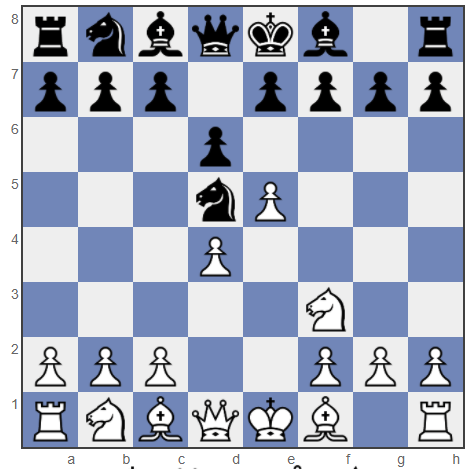
There you have your Alekhine’s defense.
3. Budapest Gambit: Black
It was very popular in the late 19th century and early 20th century.
At present, it’s one of the most studied openings in black. Almost every chess player with a little experience knows how to use this line.
Therefore, using this line in the top tournaments against white ends up in a drawn match.
Nonetheless, it’s one of the most aggressive openings for the second player.
History
Adler–Maróczy was the first person to use this opening in Budapest in 1896. Later on, Hungarian chess experts István Abonyi, Zsigmond Barász and Gyula Breyer further developed the moves into the Budapest gambit.
How to Play
The series of moves in this Gambit: 1. d4 Nf6 2. c4 e5
White opens at d4. To make it a little surprising, you move your knight to f6. Next, white moves up another pawn at c4 to take the central space. Now, you add a little more surprise and push forward your valuable king’s pawn at e5.
There you have, the Budapest Gambit.

Now, either you can play 3. dxe5 Ng4 and continue to put pressure on the white e-pawn.
Or you can play the Budapest gambit’s Fajarowicz Variation by playing the following series: 3. dxe5 Ne4 4. Bb4+ 5. Nbd2 Nc6 6. a3 Bxd2+ 7. Bxd2 Nxd2 8. Qxd2 Qe7
4. Pirc Defense: Black
According to the hypermodern school of chess, the Pirc defense opening is one of the most aggressive strategies for black.
If you need a black defense to the King’s Pawn Opening without directly challenging the White’s central space, then this line is probably the best pathway.
History
This opening strategy got its name from Slovenian grandmaster Vasja Pirc.
It was a popular opening during the 1960s when Duncan Suttles used it in several matches. It was used again in another popular match between Bobby Fischer and Boris Spassky at Reykjavík in a World Championship match in 1972.
How to Play
The series of moves: 1.e4 d6 2. d4 Nf6 3. Nc3 g6
The White will open with the king’s pawn at e4. Then you play d6 to clear your path for the bishop for future moves.
Next, white will play their queenside knight to Nc3. Now you’re putting pressure on the e4 pawn, and the white knight at Nc3 is standing right there for defense.
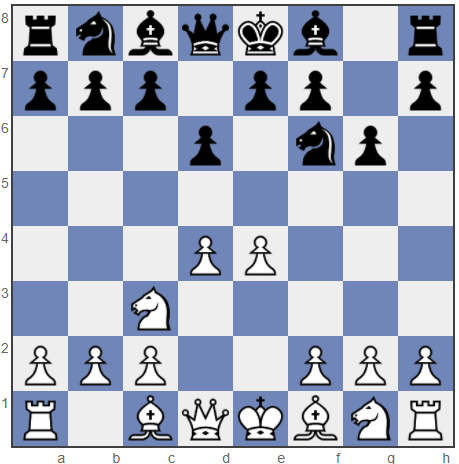
You need to bring out your queenside bishop to continue the pressure on the central pawn.
There you have it.
5. The Sicilian Defense: Black
It is one of the most dangerous black openings against White’s e4. Besides taking up the central space, the black can disturb the entire white positioning.
Therefore, it’s equally popular at the clubs and also at international tournaments.
History
In the late 16th century, Italian chess players Giulio Polerio and Gioachino Greco played this line for the first time. However, it became popular as late as the 1940s and 1950s.
Although Bent Larsen, Mark Taimanov, Leonid Stein, and Mikhail Tal developed it significantly, it was the world champions Bobby Fischer and Garry Kasparov who popularized the strategy.
How to Play
All the variations of Sicilian defense are equally effective and aggressive. But I am going to provide the moves for the four major variations only that work for black.
The Najdorf variation: 1.e4 c5 2.Nf3 d6 3.d4 cxd4 4.Nxd4 Nf6 5.Nc3 a6
The Dragon variation: 1.e4 c5 2.Nf3 d6 3.d4 cxd4 4.Nxd4 Nf6 5.Nc3 g6
The Classical variation: 1. e4 c5 2. Nf3 d6 3. d4 cxd4 4. Nxd4 Nf6 5. Nc3 Nc6
The Scheveningen variation: 1.e4 c5 2.Nf3 d6 3.d4 cxd4 4.Nxd4 Nf6 5.Nc3 e6
All the above lines are Open Sicilian. I recommend you study Sicilian strategies separately, as it’s huge and can be too much for beginners.
Want to Beat the Sicilian Defense?
Read Checkout “How to Beat the Sicilian Defense” to learn the tactics.
FAQs
Who are the most aggressive chess players?
Bobby Fischer, Garry Kasparov, Topalov, Alekhine, and Tal are the most aggressive players in the history of chess. At present, Hikaru Nakamura is considered an aggressive player.
Which is the attacking opening for black and White in chess?
There are several attacking openings in chess, such as Budapest Gambit, Indian defense, the Ruy Lopez, Latvian Gambit, Benko Gambit, King’s Indian defense, fried liver attack, etc. Most aggressive openings are attacking openings.
Is it better to be aggressive in chess?
There is no such hard and fast rule. You can be an aggressive or calm & composed player; it depends on your playing style.
How can I improve my chess attacking skills?
Study and Practice. Read the strategies that were once popular. In the words of Emanuel Lasker, “invade what is dead in chess.” Try to study them. Implement them. Surprise your opponent with less popular strategies.
Conclusion
An aggressive strategy is beneficial, as much as risky it is. You may end up winning the match in fewer moves, or things may go really messy on the board.
The above aggressive chess strategies are suitable for beginners. Go through them and practice hard before implementing them in any match.
All the best for your upcoming chess game! Let me know how it went in the comments section.

Learn Chess From Expert Teachers

